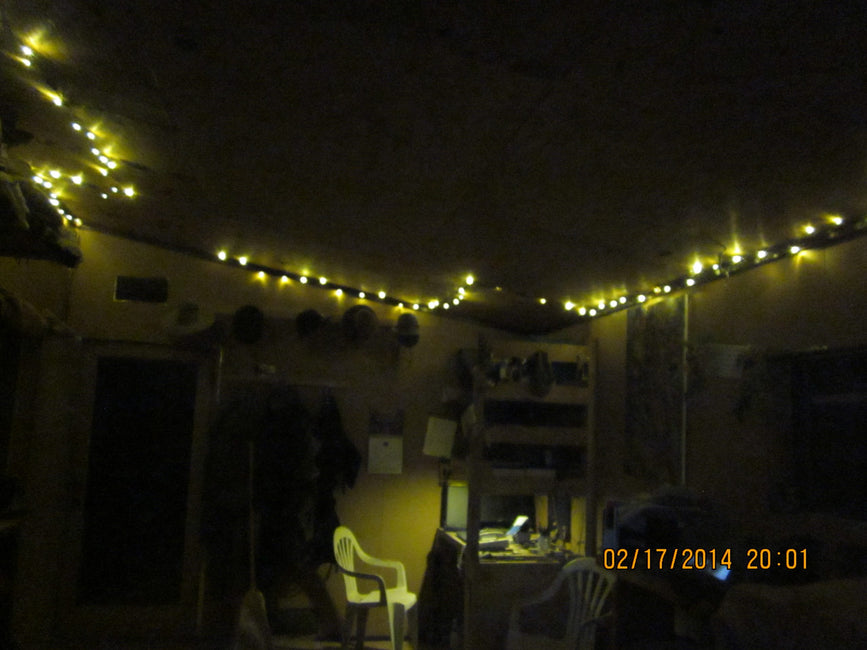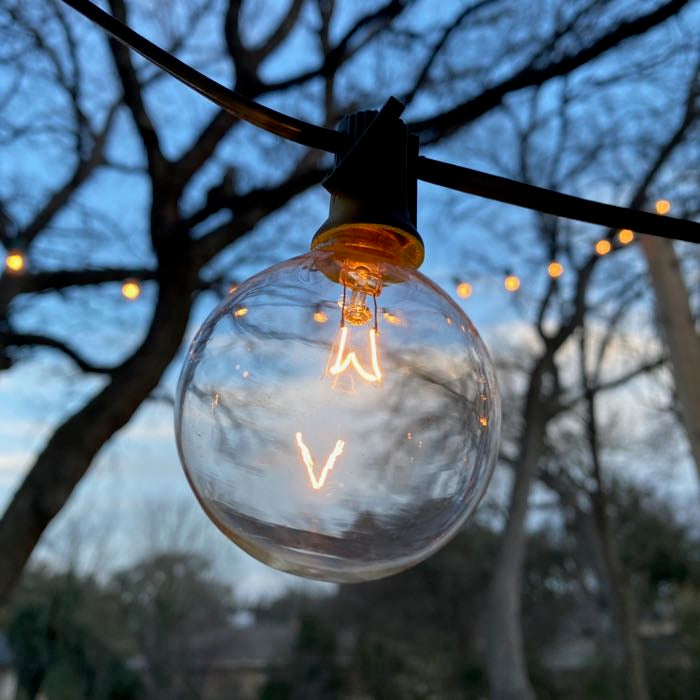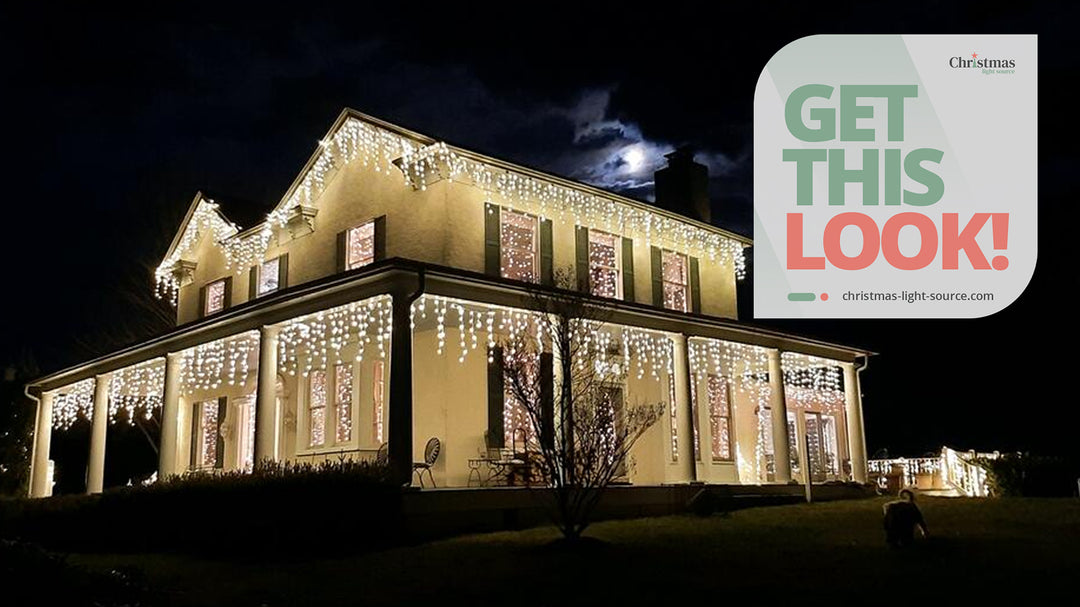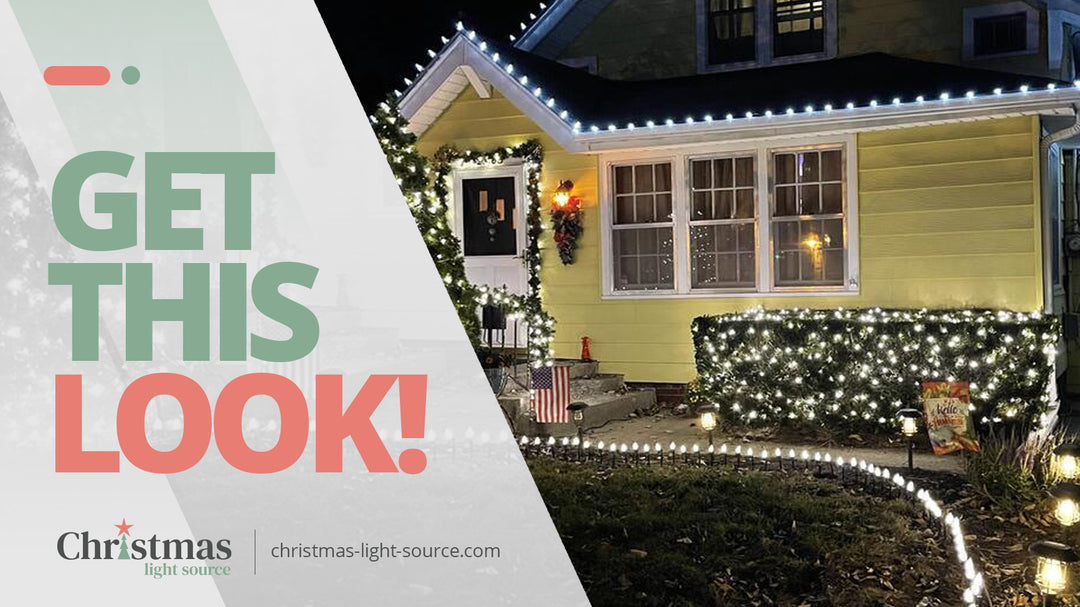Interview: Lighting a solar-powered house with 12 Volt lights

My conversation with Melissa started with this question:
Hey Shellie, we love our 12-volt lights and are interested in more. Attached are two photos of the lights used in our house with our 12-volt solar electric system. I wish I was a photographer to capture it better, but I am not. :)
Melissa
We had such a run on our 12-volt LED lights this season that the exact version that Melissa wanted will be out of stock until about July of next year. Fortunately, we have warm white lights on white wire that might be a good fit for her.
What interested me was the idea that they are running their home off solar power.
Here are a couple of photos of what Melissa's lights look like used as exterior lighting powered by their solar batteries:
Here are Melissa's responses to my questions. I thought these responses would be interesting for many of our customers.
How did you connect the lights to the system?
The lights are mostly attached to the ceiling and trim at the top of the wall. In places with objects up high near the ceiling (like a shelf), the lights outline the object so that more light is brighter in the room. So the light is not just in a rectangle around the room.
Is your entire house run on your 12-volt solar system or just the lights and a few extras?
What kind of battery configuration do you use to keep your lights on at night? Is it a bank of batteries that came with your solar panels?
I can tell you a bit about how the solar electric system is set up and works, but I have pretty limited knowledge, and there are a lot of electrical codes that I do not know all the details about. We had a solar electrician install most of our solar system. So this is a general overview.
The lights work great with our solar system because we have a 12-volt solar system. (The kind of batteries and how they are wired together determine if the system is 12, 24, or 48 more volts. The lights will only work if your batteries are wired so that they are 12 volts. The lights barely use any watts, which is essential since we have a relatively small system.
This is how our solar system works. The electricity is created in the panels and goes through a charge controller (which is like a little brain that adjusts the current and volts of the electricity based on what the batteries need). The batteries come after the charge controller. Our 2 batteries are 6 volts, so they are wired in series, which makes a 12-volt system but keeps the amp hours the same. These batteries are charged during the day, and then we use the energy at night to run our lights and other things.
As a side note: there is a breaker (if not two) in between each component (panels, charge controller, batteries, lights), and the wire size needs to be determined based on how much electricity is running through it and how far it is traveling.
Since the lights are 12-volt DC, we do not have to use our inverter. The inverter converts the DC electricity in our batteries into AC (which is what most houses run on). We use our inverter for other things, but it is most energy efficient to run things directly from the batteries rather than through the batteries and then the inverter.
Converting from DC to AC involves energy loss; some energy is also lost in running the inverter. Since solar electric energy is expensive, the first thing to do to get a solar electric system is to cut as much electricity needed as possible - thus, the 12-volt lights.
So our whole house is not run on 12 volts so for some of our electrical needs, like running the computer or blender. We turn on the inverter which converts the energy. We have 12-volt lights, a fan, a fridge, and a freezer. We would have more 12-volt things since it is more energy efficient, but 12-volt things is that they are hard to find, and we have not had time to put energy into that.
Our house has a car charger outlet option, so we could use the car charger piece that comes with the lights. We wanted it on a switch, so we cut the wire and wired it to a switch next to our door. The lights and wire travel all the way around the room and then meet up again to create a closed system.
Although people can buy a "plug and play" solar electric system, we chose each component based on our specific needs. So the panels, batteries, charge controller, and their items came from different companies.
I hope that is somewhat helpful and not too confusing of an explanation. I was just on the phone with a solar electric dealer to buy some other components yesterday. My head hurt after talking to them because they used so much terminology that I could not follow them with my limited knowledge. It is like learning a different language.
Hearing how some of our lights complement Melissa's system was great.
I hope this interview is as interesting to you as it was to me.





